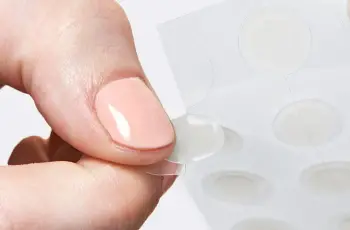
Understanding Normal Skin: Characteristics, Care, and Maintenance
Normal skin is often considered the “ideal” skin type — a balance of hydration, minimal oil production, and no excessive dryness. It’s the skin type that most people strive for, but achieving and maintaining it can require some care and attention, especially as we age or experience environmental changes. This article provides an in-depth exploration of what defines normal skin, how to determine if you have it, its unique characteristics, and how to care for it effectively.
What is Normal Skin?
Normal skin refers to a well-balanced complexion that neither produces excess oil nor experiences significant dryness. It is often described as clear, smooth, and free of blemishes, with a healthy, even tone. Despite its seemingly effortless appearance, normal skin requires a consistent skincare routine to maintain its healthy state and prevent the onset of conditions like hyperpigmentation, inflammation, or early signs of aging.
Normal skin is characterized by:
No visible blemishes: Free from acne, blackheads, or irritation.
Even skin tone: The complexion is uniform with no visible redness or discoloration.
Balanced hydration: The skin is not too oily or dry, and it maintains an appropriate level of moisture.
Smooth texture: Normal skin feels soft and smooth to the touch, without rough patches.
Elasticity and firmness: The skin is resilient, with no noticeable sagging or wrinkles in young adults.
Healthy glow: The skin has a natural radiance and reflects light, giving it a youthful appearance.
How to Determine if You Have Normal Skin
To assess whether your skin is normal, a validated dermatological quiz can be a helpful tool. Many dermatologists use these quizzes to evaluate your skin type by analyzing factors like oil production, skin hydration, and response to various products. Based on this evaluation, you can get a better understanding of your skin’s unique needs.
Characteristics of Normal Skin
Normal skin is highly coveted but relatively rare, with Baumann Skin Type 10 being the closest match for individuals with ideal skin. Only a small percentage of people maintain normal skin into adulthood, with many people’s skin changing over time due to environmental factors, lifestyle, or skincare choices.
Some of the defining characteristics of normal skin include:
Blemish-free: No visible acne, blackheads, or whiteheads.
Even-toned: A uniform complexion with minimal discoloration or redness.
Firm: Skin that feels tight and resilient, without sagging or fine lines.
Glowing and radiant: Healthy skin that reflects light and appears youthful.
Smooth texture: A soft, even surface without rough patches or dry flakes.
Hydrated: Skin that retains moisture effectively, without feeling greasy or dry.
Resistant to irritation: Normal skin tends to remain calm and unreactive to skincare products or environmental changes.
While normal skin is the most coveted, it is essential to note that it is a dynamic state that can change with time, age, environmental exposures, or improper skincare products.
The Anatomy of Normal Skin
Normal skin is defined by its well-functioning biological processes, which contribute to its smooth, glowing, and healthy appearance. Key features of normal skin include:
Adequate collagen levels: Collagen provides structure, strength, and firmness to the skin. It is abundant in normal, youthful skin.
Sufficient elastin: Elastin gives skin the ability to bounce back and retain flexibility, preventing sagging.
Healthy immune function: Normal skin has a strong immune system that defends against irritants and infections.
Intact skin barrier: The upper layers of the epidermis protect the skin from environmental pollutants, allergens, and water loss.
Minimal intrinsic aging: Younger skin shows minimal signs of aging due to its efficient collagen and elastin production.
The skin barrier, in particular, plays a critical role in maintaining hydration levels and keeping the skin protected from harmful external agents.
Is it Rare to Have Normal Skin?
Yes, it is rare to have naturally normal skin, especially as we age. According to studies, even 80% of people under the age of 20 do not have normal skin. Environmental factors, diet, lifestyle, and hormonal changes all contribute to the evolving nature of skin. Additionally, many people unknowingly use the wrong skincare products, which can disrupt the natural balance of their skin and lead to issues like dryness, oiliness, and acne.
Baumann Skin Type 10 is often considered the ideal “normal skin” type, though achieving and maintaining it requires vigilance and attention to skincare.
Understanding Normal Skin Function
Normal skin has a smooth, light-reflecting surface that glows and appears youthful. Its desquamation process (skin cell turnover) works efficiently, ensuring that dead skin cells are shed and replaced by fresh, healthy cells. Young, normal skin is typically plump, firm, and resilient due to high concentrations of glycosaminoglycans (like hyaluronic acid) and other key skin-supporting molecules.
Moreover, normal skin is highly effective at resisting irritation and inflammation. This is largely due to the intact skin barrier and lack of underlying skin conditions. The skin’s immune system is strong, and its microbiome—home to billions of beneficial microorganisms—is diverse and balanced.
Skin Assessment for Normal Skin
To assess whether you truly have normal skin, a dermatological assessment can provide valuable insights. Some of the key indicators of normal skin that professionals measure include:
Sebum secretion: The skin produces 1-1.5 mg of sebum per 10 cm² every three hours.
Color measurements: Spectrophotometric color tests show no signs of redness or abnormal pigmentation.
Transepidermal water loss (TEWL): An intact skin barrier prevents excessive water loss from the skin.
Hydration levels: Normal skin maintains appropriate hydration levels.
Melanin and pigmentation: Tests such as the RBX®-Brown transformation index help assess skin pigmentation and signs of sun damage.
Skin Care Tips for Normal Skin
Maintaining normal skin requires a consistent, balanced skincare routine. Below are some essential tips and product recommendations for those with normal skin:
Cleansing: Use a gentle gel cleanser that does not strip the skin of its natural oils. Avoid harsh cleansers, oils, or acidic products like glycolic acid, which may interfere with your skin’s balance.
Moisturizing: Opt for a lightweight moisturizer that contains hyaluronic acid. Hyaluronic acid helps hydrate the skin without making it greasy and gives it a plumping, dewy look.
Sun Protection: Sunscreen is essential for all skin types, even normal skin. Choose a broad-spectrum sunscreen with at least SPF 15 to protect your skin from the harmful effects of UV radiation, which can cause premature aging and skin damage.
Exfoliation: Do not over-exfoliate. Since normal skin doesn’t suffer from excessive dryness or oil, you don’t need strong exfoliating treatments. Focus on gentle exfoliation if necessary, but always use it sparingly.
How to Prevent Changes in Normal Skin
As skin ages or if exposed to the wrong products, it can shift from a normal type to either dry, oily, or combination skin. To prevent these changes:
Retake the skin type quiz annually to ensure that your skin type hasn’t shifted, and adjust your skincare routine accordingly.
Use products designed specifically for normal skin to preserve its natural balance and avoid unnecessary irritants.
Conclusion
Normal skin is a coveted, balanced skin type that is well-hydrated, resilient, and glowing. While it is relatively rare, it is achievable and maintainable with the right skincare practices. A simple, gentle routine that includes a suitable cleanser, lightweight moisturizer, and sunscreen is key to keeping your skin in its optimal state. By following the appropriate guidelines and keeping your skin care routine in check, you can enjoy smooth, healthy, and youthful-looking skin for years to come.


